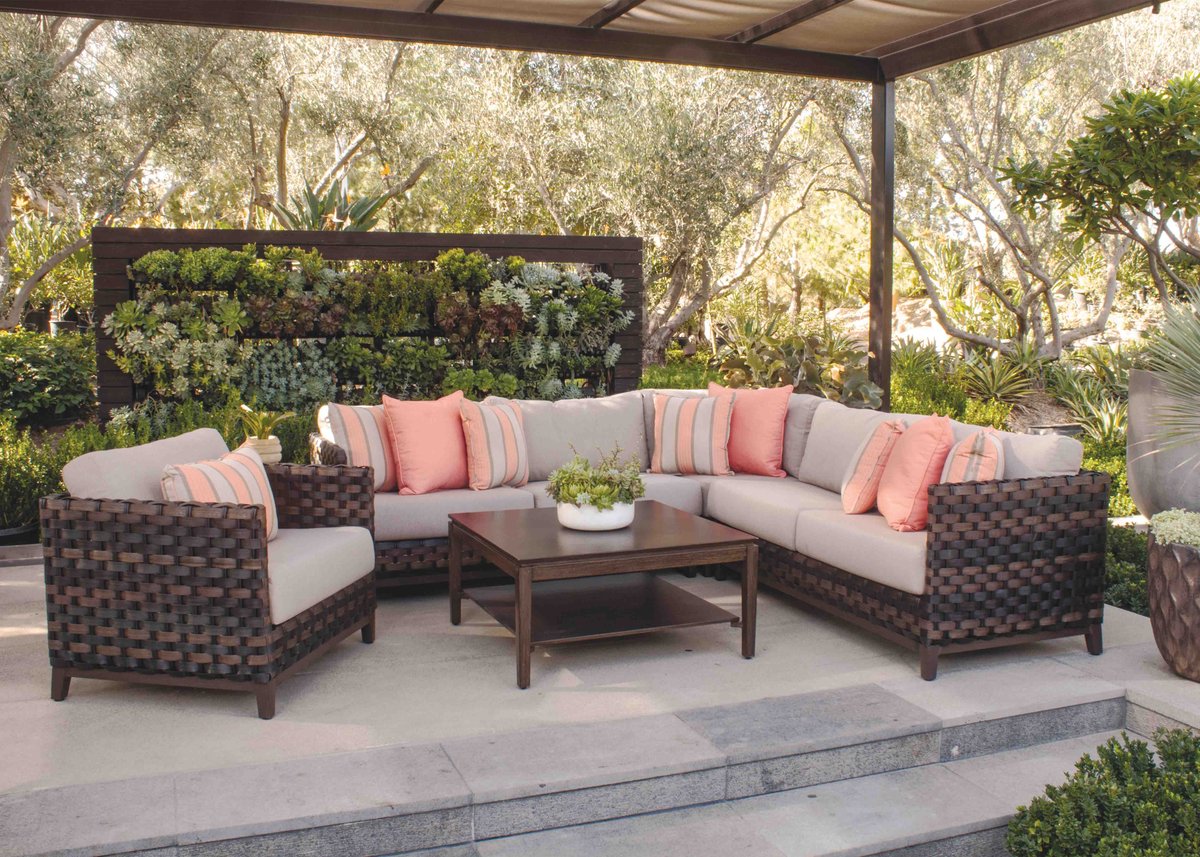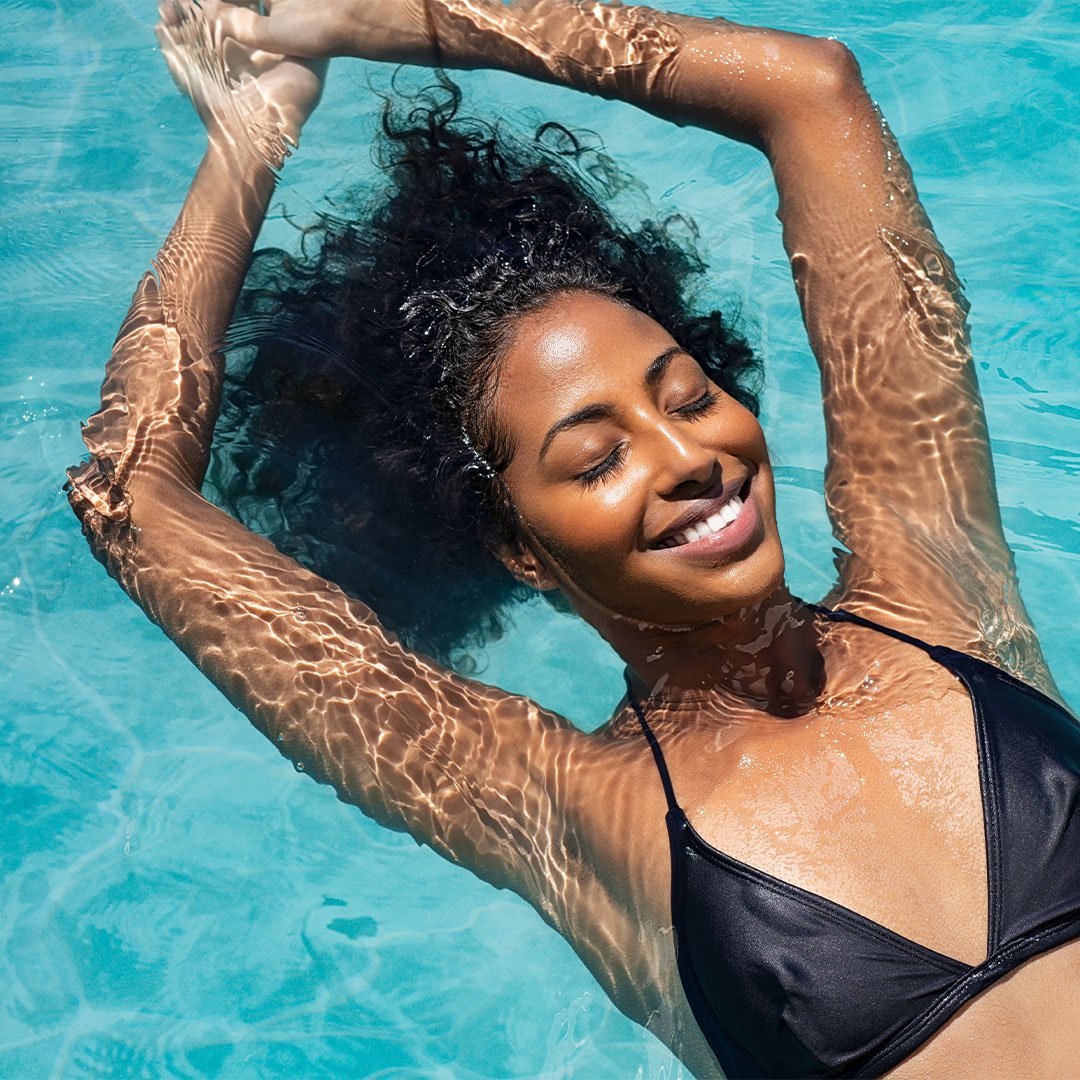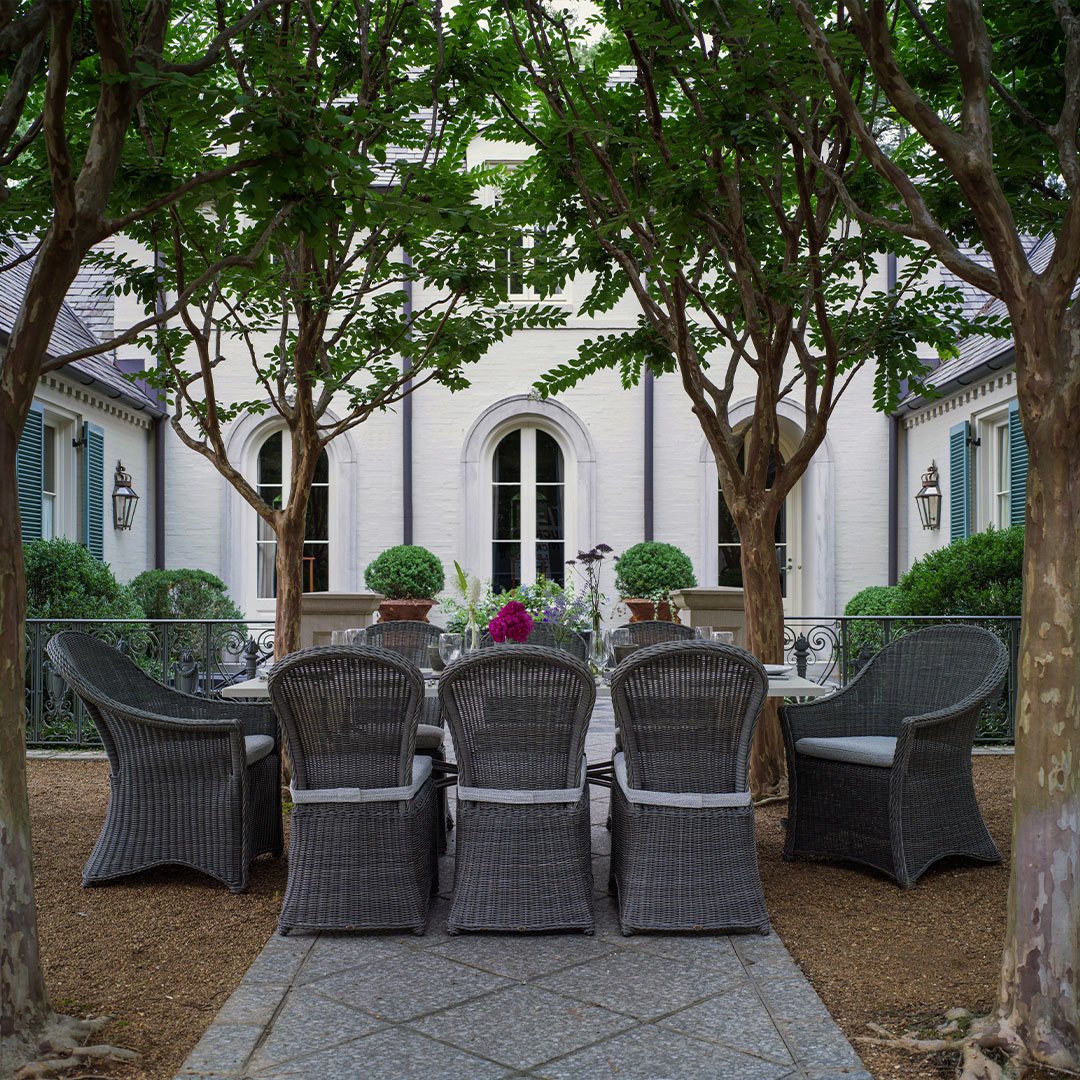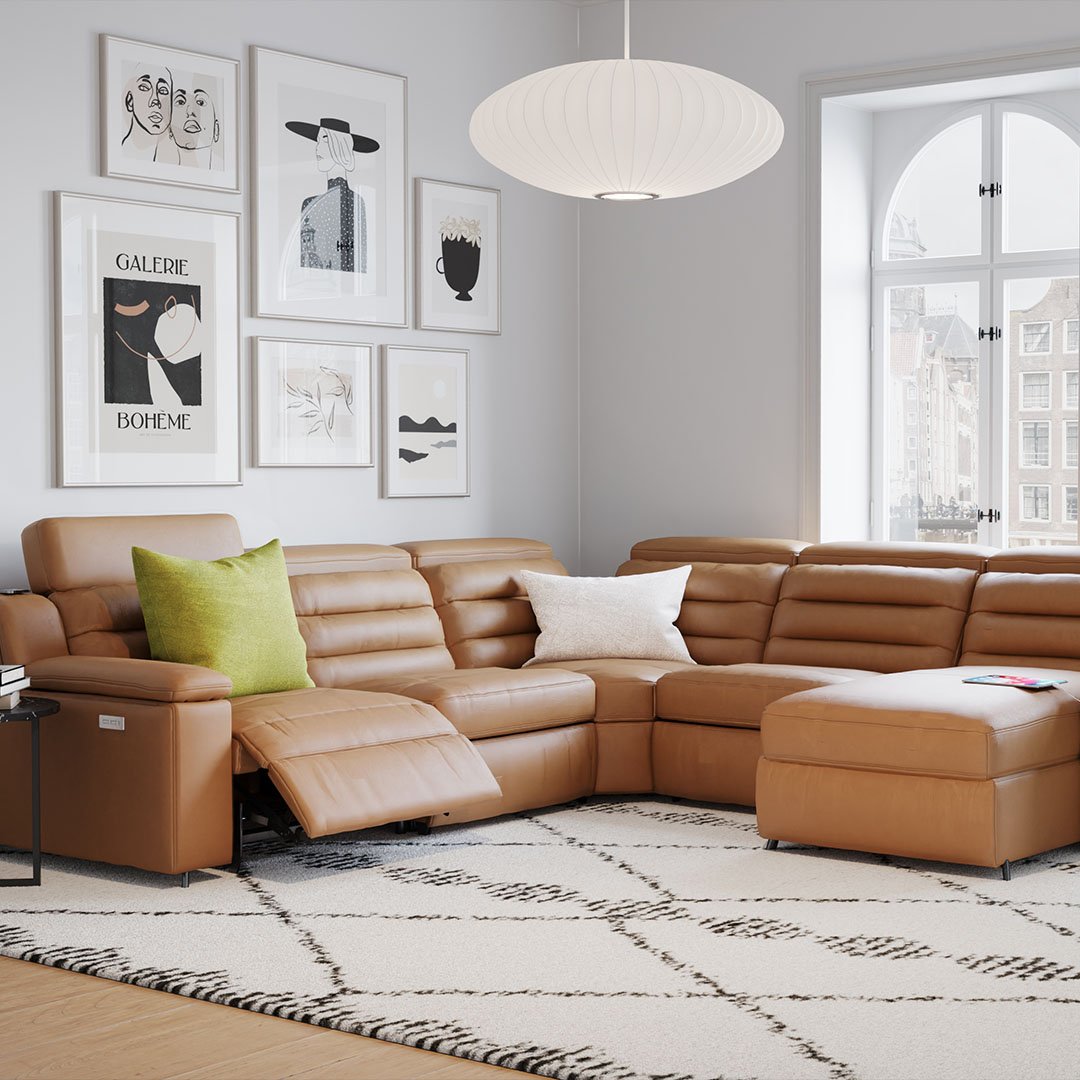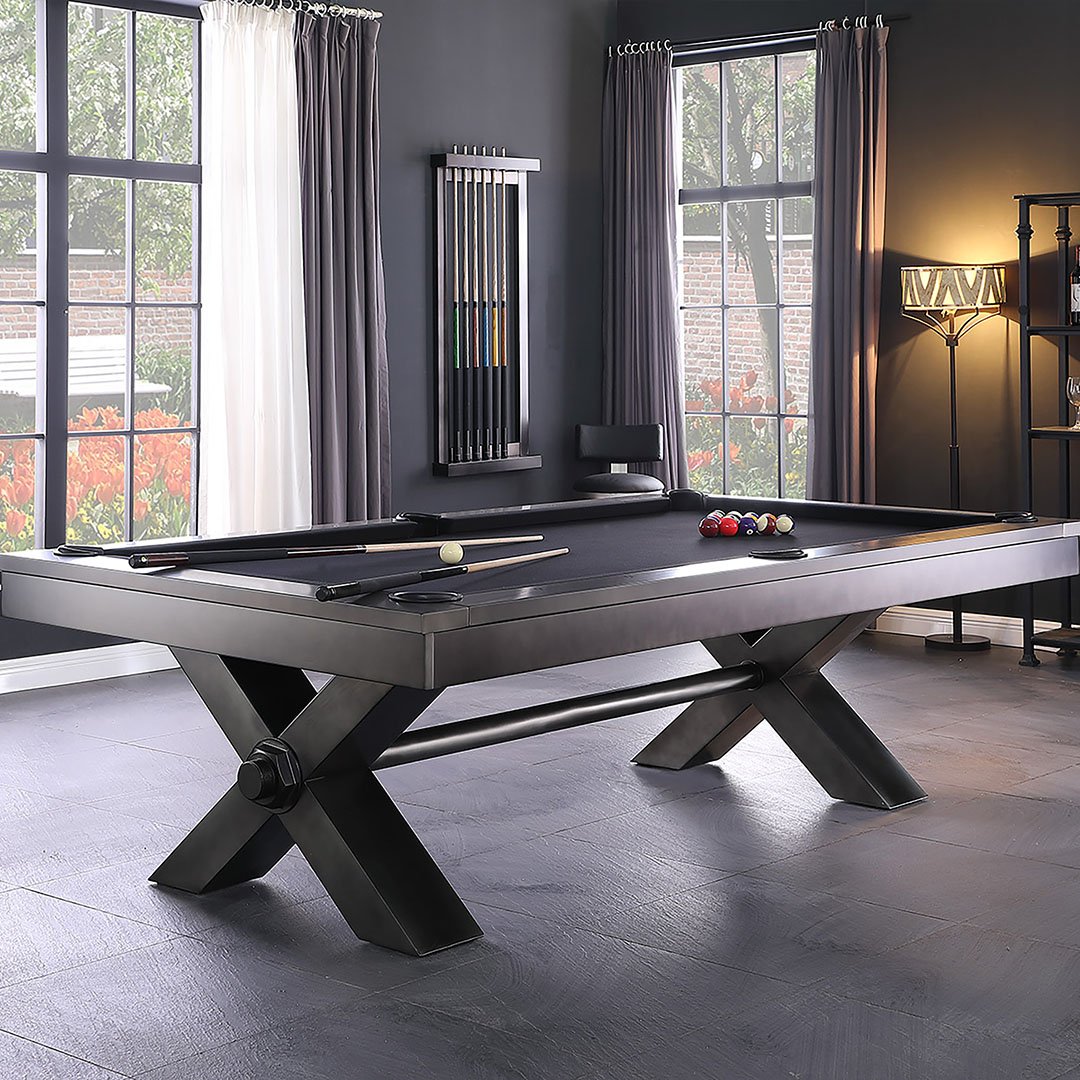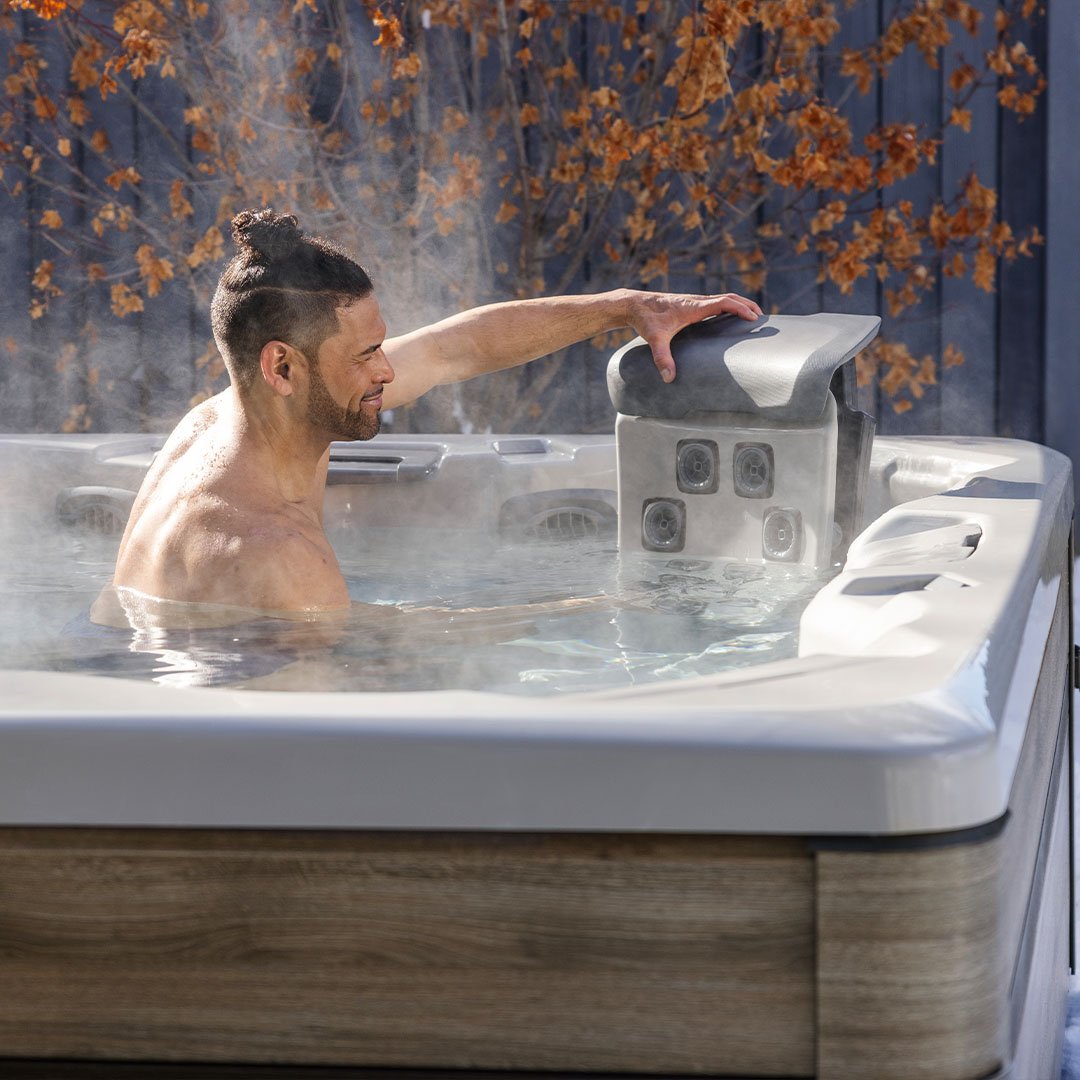The Best Outdoor Furniture Materials for Different Climates
When choosing furniture for your outdoor space, it's important to consider the climate you live in. Different materials have different advantages and drawbacks depending on the weather conditions they will be exposed to. Whether you are looking for weatherproof materials, natural and sustainable options, or the latest material innovations, we'll help you choose the right material for your outdoor furniture.
Weatherproof Materials: Teak, Aluminum, and Synthetic Resin
Durability and weather resistance are essential factors in determining the best outdoor furniture material, regardless of climate. Three of the most popular choices for durable yet stylish outdoor furniture are teak, aluminum, and synthetic resin materials.
Teak Furniture
Teak is a popular wood choice for outdoor patio furniture thanks to its natural durability and resistance to extreme weather conditions. This tropical hardwood contains a high level of oils and rubber, which helps it repel water and protect it from wind damage, making it suitable for windy conditions. Its golden brown color and tight grain pattern add to its visual appeal, making it a tasteful option for outdoor furniture.
Aluminum Furniture
Metal outdoor furniture, particularly aluminum, has become very popular for outdoor settings because of its low weight and rust resistance. Aluminum is not only lightweight but also durable, making it easy to move and rearrange as needed. This versatile metal is resistant to oxidation, ensuring that it does not rust when exposed to the elements, making it ideal for areas with fluctuating weather conditions.
Synthetic Resin Furniture
Synthetic resin is a popular choice for wicker patio furniture because of its resemblance to natural wicker and its outstanding resistance to outdoor weather conditions. Synthetic wicker, also known as resin wicker or all-weather wicker, refers to a type of polyethylene material that is designed specifically for outdoor use. It can mimic the look and feel of natural wicker while offering superior strength and resistance to moisture, fading, and extreme temperatures.
The Advantages of Natural and Sustainable Materials: Bamboo and Rattan
In recent years, there has been a growing demand for using eco-friendly and sustainable outdoor furniture materials. Bamboo and rattan are two of the most popular choices in this category, providing a natural, renewable, and biodegradable option for outdoor furniture while still maintaining a stylish aesthetic.
Bamboo Patio Furniture
Bamboo is a highly sustainable and rapidly renewable resource that has become increasingly popular for outdoor furniture material. It's not only lightweight and strong but also resistant to moisture and insects, making it an excellent choice for outdoor settings. Bamboo's natural color and unique growth pattern add a touch of exotic elegance to any outdoor space, making it a sought-after option for patio furniture.
Rattan Patio Furniture
Rattan is another sustainable material gaining popularity in the outdoor furniture industry, thanks to its natural resistance to fading and its attractive appearance. Rattan comes from the vines of tropical plants and is often used in the construction of furniture frames. When paired with cotton fabrics or other natural materials, rattan furniture offers a comfortable and stylish option for outdoor settings.
Material Innovations: HDPE Lumber, Powder-Coated Steel, and Other New Developments
Over the years, outdoor patio furniture has significantly evolved in terms of material and design. With continuous research and innovation, manufacturers are now bringing newer materials to the market. Let's go through these recent advancements in outdoor furniture materials and why they are becoming popular choices.
HDPE Lumber
HDPE lumber, also known as High-Density Polyethylene lumber, is a synthetic material made from recycled plastics. It's an eco-friendly alternative to traditional wood, offering both durability and resistance to extreme weather conditions. HDPE lumber doesn't warp, splinter or crack, making it an ideal material for wicker patio furniture. Plus, it's highly customizable in terms of design, color, and texture, allowing for personalized outdoor furniture that complements your exterior living space.
Powder-Coated Steel
Powder-Coated Steel is another innovative material taking the outdoor furniture market by storm. Steel is already a strong and durable metal patio furniture material, but with the added protection of powder coating, it becomes even more resistant to corrosion, scratches, and UV damage. This makes it perfect for outdoor use in areas where weather conditions can be harsh and unpredictable, as it increases the furniture's lifespan significantly.
Synthetic Resin
One more recent development in outdoor furniture materials is the arrival of synthetic resin, such as resin wicker. Synthetic wicker is made from high-density polyethylene, which is a weatherproof and UV-resistant material. This outdoor material is designed to mimic the look and feel of natural wicker but offers increased durability and low maintenance. Resin wicker patio furniture provides an elegant and timeless look for your outdoor spaces while being resistant to wear and tear caused by weather conditions.
The Pros and Cons of Common Outdoor Furniture Materials for Different Climates
When it comes to outdoor furniture materials for climates with varying weather conditions, the choice of material becomes crucial. Not every material can withstand sudden changes in temperature, rainfall, and windy conditions. Let's explore the pros and cons of the most common outdoor furniture materials and how they fare in extreme temperatures and varying weather conditions.
Wooden Furniture
Wooden outdoor furniture is known for its natural beauty and ability to blend with any outdoor setting. Teak, in particular, is renowned for its water-resistant and insect-repellent properties. However, wooden furniture can be heavy and requires regular maintenance to maintain its appearance and prevent weather damage. In areas with extreme temperatures and heavy rainfall, wooden furniture may not be the ideal choice, as it is prone to warping and cracking.
Metal Furniture
Metal patio furniture is a popular choice among homeowners, thanks to its durability and strength. Materials like aluminum and wrought iron can withstand varying weather conditions, making them ideal for patio productions. However, metal furniture can become uncomfortable in extreme temperatures, as they heat up or cool down very quickly, creating an unwelcoming seating surface.
Synthetic Furniture
Synthetic materials, especially those made of HDPE and synthetic wicker, are becoming more popular since they offer the perfect balance of style, durability, and comfort. These materials can resist moisture, and UV damage, and can maintain their appearance even in extreme temperatures and weather conditions. However, they may lack the natural look and feel of traditional wooden or classic metal patio furniture, which might not appeal to everyone.
Fabrics and Upholstery
Cotton fabrics are well-loved for their soft texture and comfort, which make them suitable for outdoor upholstery and cushions. However, they are not the best option for outdoor furniture materials in areas with frequent rain or high humidity levels, as cotton can absorb moisture and take a long time to dry, leading to mold and mildew growth. Synthetic fabrics like olefin, solution-dyed acrylic, and polyester are better alternatives, as they provide better resistance to water and UV damage while still offering comfort and style.
Comparing Durability, Maintenance, and Aesthetic Appeal: How to Choose the Right Material for Your Outdoor Furniture
With different outdoor furniture materials come different characteristics. Some materials have particular advantages in one area, but they may leave something to be desired in other areas. Let's compare durability, maintenance, and aesthetics to help you choose the right material for your outdoor furniture.
Durability: Which Material Stands the Test of Time?
The durability of your outdoor patio furniture depends on the material it's made of and how well it can withstand various weather and climate conditions.
Wooden patio furniture is one of the top contenders when it comes to durability. Teak, in particular, is naturally resistant to decay and insect infestation, making it a long-lasting option for garden furniture. Also, the teak doesn't warp or crack easily, ensuring prolonged usage.
Metal patio furniture, specifically aluminum, is another durable option. Cast aluminum patio furniture is lightweight, rust-resistant, and sturdy, making it a popular material for outdoor furniture. However, in windy conditions, lightweight aluminum might need additional weight or heavy rugs for stability.
Synthetic resin, such as resin wicker or polyethylene-based weather wicker, is also an excellent choice for outdoor furniture. Resin wicker is noted for its resistance to UV rays, humidity, and temperature changes. Synthetic wicker doesn't mold, fade, or deteriorate, making it a strong contender in terms of durability.
Maintenance: How Easy Is it to Keep Your Patio Furniture Looking Good?
When selecting outdoor furniture, ease of maintenance plays a crucial role in the decision process. After all, everyone appreciates beautiful and clean patio furniture that doesn't demand lots of time and effort to maintain.
Wicker patio furniture, especially synthetic wicker, is generally low maintenance. To clean synthetic resin wicker, you'll only need to wipe it down using a soft cloth and soapy water. For more thorough cleaning, just use a garden hose or a pressure washer on a low setting.
Teak patio furniture requires slightly more maintenance than synthetic wicker but is still relatively easy to care for. Teak outdoor furniture can be left untreated, weathering to a beautiful silver-gray color over time. However, if you prefer maintaining its golden-brown hue, periodic application of teak oil is necessary.
Aluminum patio furniture can be virtually maintenance-free. If it has a powder-coated finish, occasional cleaning with a mild soap solution and rinsing with water is all that's needed to keep it looking great.
Aesthetic Appeal: Which Material Complements Your Outdoor Space?
A great patio is an extension of your home, so selecting outdoor furniture with the right aesthetic appeal is essential. Patio furniture materials have their unique appearance, and the choice depends on personal preference and the overall design of your outdoor space.
Wicker patio furniture, especially weather wicker, offers a timeless and elegant look. Whether you prefer a traditional or contemporary design, there's a wide range of resin wicker furniture styles available. This material also allows for endless color options and matches various cushions and accessories.
Teak patio furniture boasts a natural and sophisticated appearance that complements diverse outdoor settings. From modern to rustic styles, teak furniture can easily blend into various décor schemes. Plus, teak wood reflects a warm and inviting ambiance, perfect for creating a cozy outdoor retreat.
Metal patio furniture, specifically aluminum, is versatile and stylish. Aluminum furniture provides sleek and contemporary designs, making it perfect for modern outdoor settings. Moreover, aluminum frames can be powder-coated in different colors, allowing for even greater customization.
Weighing the Pros and Cons
To make an informed decision on the best outdoor furniture material, it's wise to conduct a comparative analysis based on durability, maintenance, and aesthetic appeal. Here's a quick breakdown of each material's strengths and weaknesses.
Teak patio furniture is highly durable and naturally resistant to the elements, but it requires periodic maintenance to retain its color. In terms of aesthetics, teak offers sophistication and warmth for diverse outdoor environments. On the downside, teak furniture can be quite expensive compared to other materials.
Aluminum patio furniture is lightweight, durable, and low maintenance. It offers a sleek and modern appeal, working well in contemporary outdoor spaces. However, aluminum may require added weight during windy conditions, and there's a risk of scratches and dents over time.
Synthetic wicker, such as weather-resistant resin wicker, boasts excellent durability and low maintenance. Its timeless and versatile design complements various outdoor décor styles. However, synthetic materials may not feel as solid or authentic as natural wicker or wood furniture.
If you’re interested in finding new outdoor furniture, Watson’s has everything you need.
When you shop with us, you’ll find an amazing selection and personalized service, along with the guaranteed lowest prices in the USA. We have a wide variety of outdoor furniture from the leading brands along with tons of accessories to make your outdoor space complete. Shop online or stop by your nearest Watson’s location today.
FAQs
What is the most weather-resistant outdoor furniture?
The most weather-resistant outdoor furniture is typically made from materials such as teak, aluminum, stainless steel, and outdoor-rated wicker. These materials are durable, resistant to fading, and can withstand the elements, including rain, sun, heat, and wind. Additionally, outdoor furniture made from these materials often has weather-resistant cushions and covers, which can help protect the furniture from the elements and extend its lifespan.
What is the best material for outdoor furniture in humid climates?
The best material for outdoor furniture in humid climates and coastal regions is all-weather wicker, teak, or aluminum. All-weather wicker is a synthetic material that can withstand humidity and moisture without mold or mildew. Teak is naturally resistant to moisture and can withstand humid conditions. Aluminum is also a good material for humid climates, as it doesn't rust or corrode in high humidity. Just be sure to use cushions made of quick-dry foam and fabric to avoid moisture buildup.
What patio furniture can you leave out in the winter?
If you live in an area that experiences harsh winter weather, it's recommended to store your patio furniture inside to protect it from damage. However, if you must leave your furniture outside, materials such as aluminum, wrought iron, and teak are usually able to withstand winter conditions. Furniture made of materials such as wicker, plastic, and fabric should be covered or stored inside to prevent damage from moisture and freezing temperatures.





